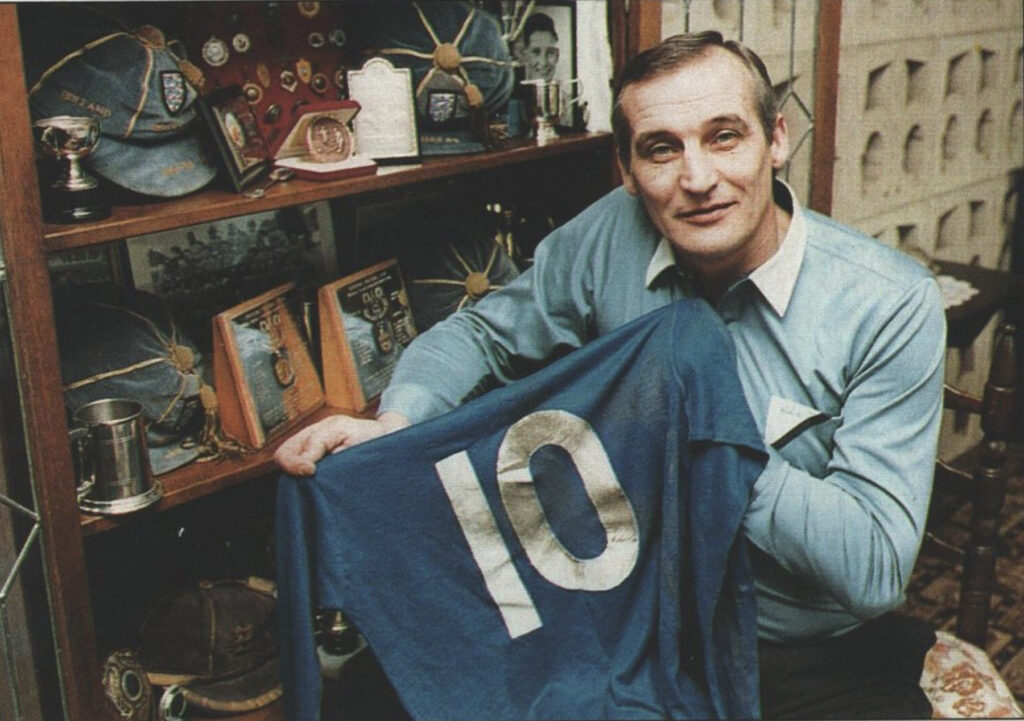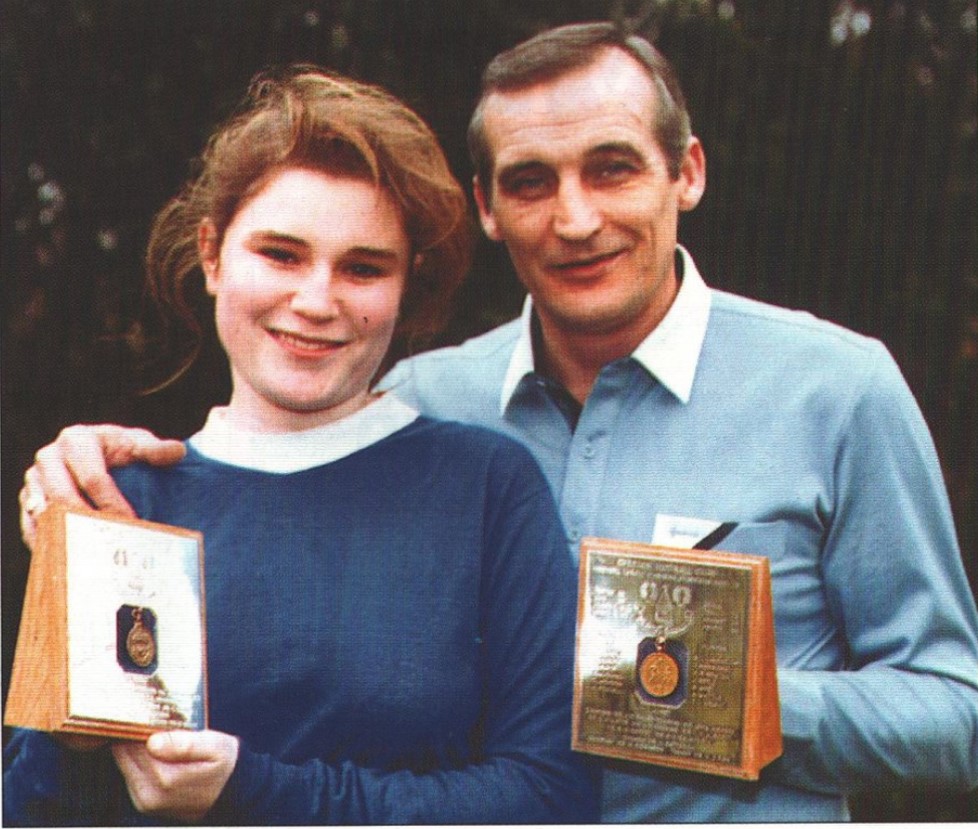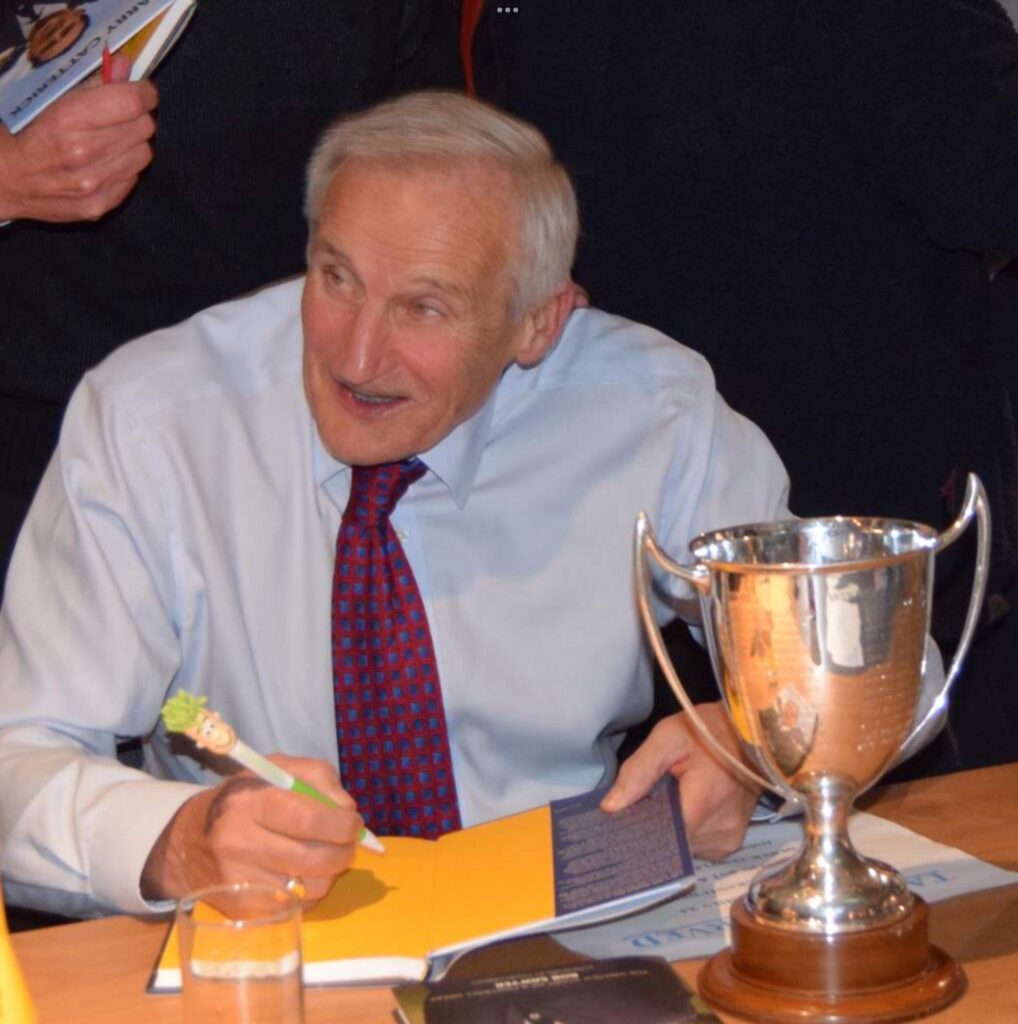A Tribute
by Rob Sawyer
‘The Last of the Corinthians’ is a phrase used to describe one of Everton’s great captains, Brian Labone. However, John Hurst, his defensive partner in Everton’s great side of the late 1960s, embodied many of the same qualities that gave Labone his sobriquet.

Like Roger Kenyon, who would also come through the ranks at Bellefield and be unlucky not to collect full international honours, John hailed from Blackpool. A centre-forward and inside-forward as a youth, the leggy Lancastrian had represented Blackpool schoolboys and also received England youth honours. Harry Catterick had seen him line up for Blackpool against their Liverpool Schoolboy adversaries in the Lancashire Schoolboys Cup Final and liked the cut of his jib. In May 1962, the Toffees moved in ahead of Manchester City, Wolves, Aston Villa and John’s hometown club to add him to their roster of talented prospects (Aiden Maher and Gerry Glover were signed in the same week).
He signed as a fifteen-year-old apprentice, and by January 1963 was drawing praise in Alex Young’s Liverpool Echo column for a hat-trick for the ‘A’ team against Liverpool (Tommy Wright, another forward who would later be converted to a defender, scored the other goal for the victors). He signed professional forms at the earliest possible opportunity. An issue with a shoulder that dislocated easily was solved by surgery at Broadgreen Hospital. It was clear that Harry Catterick remained a fan of the forward prospect when calling up John (and several other youngsters) for the lengthy Australian Tour of 1964. Having never been abroad before, the teenager had to make a mad dash to London to get his travel documents arranged. The five-week expedition gave him useful first team minutes, and the chance to bond with, and learn from, senior pros.

1965 saw John score the deciding goal in the 1965 Youth Cup final – in a side also containing the likes of Jimmy Husband, Geoff Barnett and Gerry Glover. He would be the scorer of the deciding goal against Arsenal’s starlets on a night of torrential rain. It was a spot kick, in off the underside of the bar, which he recalled to me in 2015: ‘It was the only penalty I ever took in my professional career. It was a case of: “It’s your responsibility – go and take it! I never took another, so I retired with a 100% record!’

Come the start of the following season, he was named as substitute (a novelty in English league football) for the season’s opener. A week later, he replaced the injured Fred Pickering with seven minutes left on the clock at the Victoria Ground. What was already a significant milestone, almost became momentous when the debutant scored in the dying seconds…or so he thought. It transpired that the referee had blown his whistle to signal full-time as John applied the coup de grace. He then enjoyed a brief run of games at right-half in place of Jimmy Gabriel, racking up nineteen appearances in all that season, playing in a variety of roles.
As Harry Catterick began to reshape his Everton side, with the old guard of Roy Vernon and company moving on, John was gradually assimilated into the first eleven. A strong showing against Liverpool mid-way through the 1966/67 season saw him establish himself – making thirtty-one appearances, primarily at wing-half.

In 1967/68, with the Harvey-Kendall-Ball triumvirate in midfield, John found himself operating as one of two centre-backs (wearing the number 10 shirt – a favour to Colin Harvey, who disliked the number due to the unfavourable comparisons it brought with the free-scoring Roy Vernon), alongside Brian Labone. The pair complimented each other – with the junior partner having vital pace to compliment his strength, height and heading ability. And, of course, as a former forward, he was comfortable on the ball, able to distribute it effectively and had an eye for goal. Of his conversion to a defender, he said:’ That surprised a few people, but I preferred that position and had played there a lot for my school team, so I didn’t feel out of place.’ He was always grateful to the senior partner’s guiding influence: Brian gave me tremendous encouragement and advice.’
John missed the 1968 FA Cup semi-final with what was rumoured to be Hepatitis. In fact, it was fatigue-related jaundice, which a specialist had stated would keep him out for the rest of the season. He was sent to a nursing home to recuperate – with the club point-blank refusing to reveal his location to his soon-to-be bride, Rose Ingram, such was the veil of secrecy in the build-up to the semi-final (Rose, eventually tracked him down by phoning various nursing homes in the phone book). He was sufficiently recovered to take to the famous Wembley turf for the final against West Bromwich Albion. Sadly, in a disappointing final, the Toffees fell to a Jeff Astle strike. It was one of the greatest disappointments of John’s career, along with a semi-final defeat to Manchester City a year later. In spite of his consistently classy displays at the heart of the Blue’s rearguard, he never advanced beyond Under-23 level (nine appearances) for England.

John Hurst looks on as Ray Wilson and Graham Lovett of West Brom battle for the cross.

(John Hurst centre row, in front of goalkeeper Gordon West)

In the 1969/70 season, John’s strike at Highbury got the campaign up and running – his forty-two league appearances and five goals proving a key – if sometimes unheralded – part of the successful campaign. John said, ‘In addition to the thrill of winning the game’s greatest honour, there was also the satisfaction of playing in such a good footballing side. When you turn out for Everton you are aware of their tradition, and we felt we matched it that season.’
In the run-in, he became the senior defensive partner as fellow Fylde coast denizen Roger Kenyon came in for the injured Brian Labone. The pair would sometimes commute to Merseyside from the other side of the River Ribble and, one Monday morning, found that The Catt had no tolerance for lateness. The journey had been badly disrupted by terrible traffic problems near Preston. The excuse proffered to the boss fell on deaf ears, as Everton’s famously disciplinarian manager pointed out that they had had since Saturday evening to get to Bellefield in a timely manner.
John would reveal, a few years ago, that Harry Catterick took the step of referring him to a psychologist in a bid to get him to become tougher and more effective. The man in the Goodison hot seat was once quoted assessing his centre-back: ‘He has far more ability than he displays at times. He has greater attacking flair and when the situation is on from him to break from the back, he rarely does it. When he does it, it usually means trouble for the opposition.’

In a period of turbulence at the club, post-1970, John remained a rare constant as other players fell out of form, were injured or departed Goodison. He found the increasing prevalence of football on TV helped him: ‘I watch as much as I can – TV does give you a chance of refreshing your memory about some of your opponents. I concentrate on sizing up the forwards’ strengths and weaknesses. Naturally, you then try to make the other fellow pay for his weaknesses.’ John, who rated Joe Royle as perhaps the best number nine around, before his back problems, would relish playing against the bigger centre forwards but found Derby County’s Kevin Hector, a smaller but mobile and gifted striker, a more challenging opponent.
When Billy Bingham assumed the helm at L4 in 1973, he initially stuck with John, but a year later, Mike Lyons often found himself partnered with Roger Kenyon. The emergence of Ken McNaught gave Bingham further options at the back, as evidenced by just six starts and three substitute appearances for the Blackpool-born man in the 1975/76 season – his last coming in a 3-1 defeat of Middlesbrough at Goodison Park on Easter Monday.
Still only 29, his stellar Everton career was at an end and ‘Gentleman Jack’ was granted a free transfer to Oldham Athletic, managed by Jimmy Frizzell (Stockport County had also held talks but failed to follow up with a firm offer). He later commented: ‘I can say, in all honesty, that I enjoyed my spell at Oldham. Not that I was glad to leave Everton. I wasn’t. I loved the club and, in fact, still do. But I had reached the crossroads, and the move was right for me.’



At Boundary Park, he showed there was plenty of footballing life left in his body, racking up 209 appearances for the Latics to take his career total past the 600-mark. He continued living in Aughton (having first lived in Maghull upon marrying Rose), commuting to training and matches at Boundary Park. It took some adjusting to life as a Latic, after having access to the best of everything with the Toffees: ‘At Everton there were those superb training facilities at Bellfield, but at Oldham we literally did our training on a spare field. But somehow it didn’t matter, there was great spirit in the club.’
Away from football, John was fond of reading, gardening and birdwatching and enjoyed raising two daughters, Samantha and Alexandra, with Rose. She hailed from the Channel Islands, but had met John at high school after relocating to Blackpool. During his playing days he had male company in the form of Buster, the pet German Shepherd dog.


Although he had envisaged remaining in the game, by the time he was pondering hanging up his boots (not long before his former teammate, Joe Royle, became the Latics’ boss), John reassessed his aspirations. He told the Everton matchday programme: ‘After five years at Oldham, I felt it was time to quit while I was ahead. I watched a few games towards the end of last season and decided the change in the way things were being done was too drastic for me to go into football. I was disappointed in the standard of play. A huge and drastic change has taken place in the way football is played over the last six years.’
A short-lived business venture, at a Tetleys pub on the Dock Road, did not work out well for John and Rose. A second business, in the Kensington area of the city, selling ex-catalogue shop goods, was more successful, and lasted seven years (with Samantha being roped in as a Saturday assistant). Next, the former footballer was employed by Royal Liver Insurance, but he also did some player scouting for clubs. He would watch Everton and Oldham occasionally but, in his words, he was ‘selective’ about what he watched: ‘I go to see Tottenham because I am a fan of Paul Gascoigne,’ he said in 1991. ‘He has superb talent. I appreciate watching good players and characters and there aren’t that many around today.’

(Left to right) Roger Kenyon, Brian Labone, Alan Whittle, Joe Royle, Jimmy Husband, John Hurst, MW, Gordon West, Alex Young.

The return of his pal Joe Royle to Everton, in the capacity of manager, paved the way for John’s full-time return to football in 1994. Initially he was assisting B team manager Dave Fogg, with John tasked with focusing on the first year YTS players and young professionals. Asked about the role by The Evertonian magazine, he explained: ‘It’s fantastic to be back at this club. You’ve got to be able to encourage the kids. I’ve seen hundreds of young footballers come and go in my years in football. My job is to try to get them to apply their talent. You have to prepare young players for the tough times – especially the first years who come here and have been stars in their local teams or schoolboy sides. Here, they are on the very bottom rung of the ladder, and they are no longer the star players. We have to teach them everything from scratch…once they have had a couple of training sessions they realise they aren’t stars anymore.’
When Fogg left, John was promoted, and was assisted by former Toffees winger Ronny Goodlass. The pair helped a good number of players to develop and get first team minutes, including Gavin McCann, Danny Cadamarteri, Phil Jevons, Michael Ball, Jamie Milligan and Richard Dunne. Rejoining the Blues may well have saved John’s life, as a heart defect was identified, and he underwent major bypass surgery in 1995. He had kept the diagnosis from Rose, she only found out when Joe Royle let it slip, assuming she had already been told by her husband. Making a full recovery from the surgery, he returned to his Everton duties.
The departure of Royle in the spring of 1996, and the return of Howard Kendal for a third spell as manager, heralded the departure of both John and Ronny. John would follow his friend to Maine Road, acting as Manchester City’s chief scout. Having left football again, he would work for Tesco in Leyland, and one wonders how many football fans did a double-take when seeing the familiar figure in the supermarket’s uniform.

Derek Temple and Tony Kay, with John Hurst in the centre, signing the souvenir brochure commemorating that victorious season, while Tony Wainwright of EFCHS looks on.
In retirement, John would often be seen at Goodison supporting the Blues. It was not unknown for him to call in on Everton FC Heritage Society at St Luke’s to lend support to a book signing events. He was also a regular and popular guest at Everton-related functions. Generous with his time, this unassuming man was warm and also had a delicious, naughty sense of humour. Attending the Heritage Society’s tribute night for Harry Catterick, held at Goodison Park in 2019, John was surprised and delighted to be presented with the Dixie Dean Memorial Trophy by Dean’s granddaughter, Melanie Prentice (shown below right).



Over the past decade or more, there has been a ‘coffee club’ every Thursday in Ormskirk, where John would catch up with Derek Temple, Joe Royle and former physio Jim McGregor – oh, to have been a fly on the wall as they dissected the modern game.
John had been very ill since last October, being cared for by his family and visited by friends. He stunned them with his battling qualities and powers of recovery, but he passed away on 18 January at the age of seventy-six.
A short time after hearing of the passing of his old friend, Derek Temple told us,
John was a strong player but there was nothing dirty about him; he played the game the way it should be played – and did it very well. He was a very good player and had an excellent partnership with Labby at the back. He was a good bloke and we could have a good craic with him at our Thursday coffee mornings.
John Hurst, eighteenth in the Everton all-time appearance table (just two appearances clear of Gordon West, the best man at his wedding in May 1968), leaves a legacy of being one of the School of Science’s most polished centre-backs and one of its finest men.
Further reading:
Real Footballers’ Wives – The First Ladies of Everton by Becky Tallentire.




I’m from a red and blue family and have many good memories of John Hurst. A real battler and a credit to his team. Commiserations to John’s family and friends.
YNWA.
Went to school.with John always good fun and always a clean player sad news